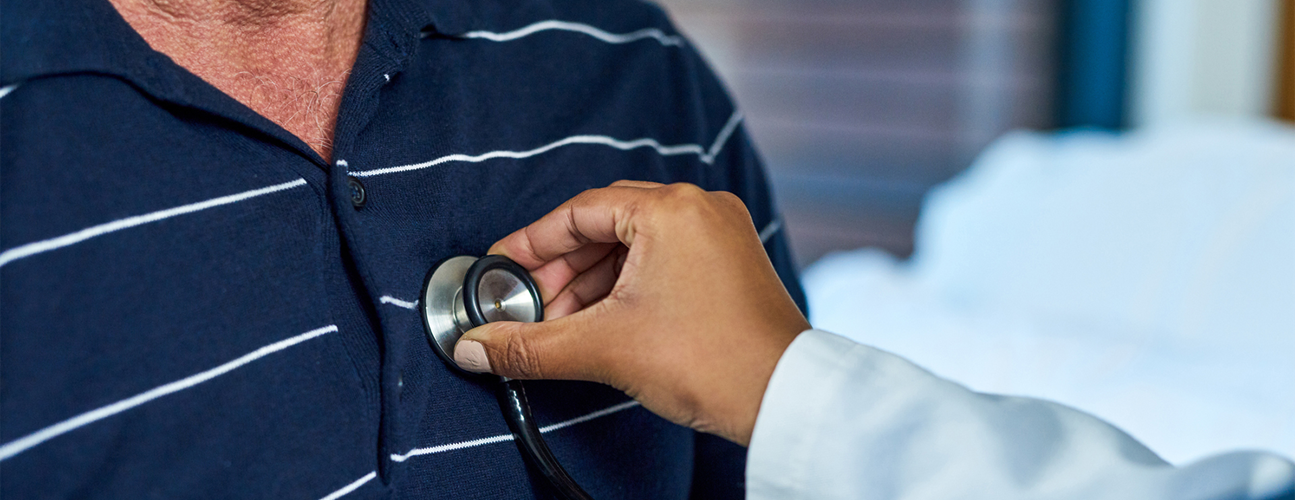Tricuspid Valve Replacement and Repair
Featured Expert:
The tricuspid valve controls the flow of blood from the right upper chamber to the right lower chamber of the heart. This valve may become dysfunctional due to infection, rheumatic heart disease or congenital birth defects. A damaged tricuspid valve causes the heart to work harder to send blood to the body and may eventually lead to heart failure.
Johns Hopkins cardiac surgeon Fayyaz Hashmi, M.B.B.S., explains why a tricuspid valve replacement or repair may be needed and what to expect during this procedure.
What is the tricuspid valve and where is it located?
The tricuspid valve is on the right side of the heart. It separates the upper and lower chambers, also known as the right atrium and ventricle. The valve allows deoxygenated blood to flow through both of the chambers. The right ventricle pumps blood to the lungs, where it will be oxygenated.
Tricuspid valve disease occurs when the valve is damaged or weakened. This causes the right ventricle to work harder and pump faster to increase the blood flow in the right direction.
Tricuspid Valve Disease
Damaged valve leaflets may grow thick and brittle from scar tissue or calcium deposits, or they may become thin and weak, resulting in an inefficient valve. The leaflets may also be destroyed by infection.
There are different types of tricuspid valve disease:
Tricuspid Valve Stenosis
Tricuspid valve stenosis occurs when the tricuspid valve is narrowed, reducing the blood flow between the atrium and ventricle of your heart.
Symptoms of tricuspid valve stenosis include the following:
- Cold skin
- Chest pain
- Fatigue
- Palpitations
- Swelling in the legs
Tricuspid Valve Regurgitation
Valve regurgitation occurs when the damaged tricuspid valve leaks blood backward into the atrium. This type of tricuspid valve disease is commonly caused by an increase in the size of the right ventricle, which usually is due to a diseased mitral valve.
Symptoms of tricuspid valve regurgitation usually occur when the condition becomes severe. These symptoms may include the following:
- Abnormal heart rhythm (arrhythmia)
- Fatigue
- Pulsing in your neck veins
- Shortness of breath
- Swelling in your abdomen, legs or neck
Call 911 or go to an emergency room if you have heart problems such as chest pains, dizziness, shortness of breath or sudden numbness. Get help immediately.
Stay on Top of Your Heart Health

If you have a new or existing heart problem, it's vital to see a doctor. Our heart health checklist can help you determine when to seek care.
Treatment for Tricuspid Valve Disease
Your doctor will determine your type of tricuspid valve disease and its severity, and whether repair or replacement of the valve is needed.
Tricuspid Valve Repair
Under anesthesia, your surgeon can perform several types of repairs that depend on the type of tricuspid valve disease and its cause. Tricuspid valve repair is an open-heart procedure. Your surgeon may reshape the valve, or repair or separate fused valve leaflets. The operation can be done through a small incision on the side of the chest.
Your surgeon may also implant an annuloplasty ring, which is made of either silicone or metal and can restore the shape or tighten the ring around the valve called the annulus.
Tricuspid Valve Replacement
If your tricuspid valve is severely damaged, you may need valve replacement surgery. During this procedure, your doctor will remove the damaged valve and replace it with an artificial one that is either mechanical or created by biological tissue.
Mechanical Valve
This valve is metal or carbon, and is covered in polyester fabric around the ring. Mechanical valves are more durable than tissue valves but require lifelong blood-thinning medication to reduce the risk of blood clotting and strokes.
Biological Valve
Tissue valves can be made from animal tissue (pigs or cows). This valve only lasts approximately 10 to 15 years but doesn’t require lifelong blood-thinning medication.
Tricuspid Valve Surgery Recovery
After your procedure, you will remain in the hospital for approximately five days before going home. Most people can return to their normal activities three to four months after surgery.
Risk of Infection After the Procedure
To prevent an infection (endocarditis) from occurring around the new heart valve or ring, you should receive antibiotics before having any procedure that could permit bacteria to enter your body. These procedures include:
- All dental procedures (cleaning, filling, removing teeth, root canal, gum or ulcer treatment).
- Surgical procedures such as colonoscopy and cystoscopy.
Discuss with your dentist or doctor whether your blood thinner medication needs to be decreased, altered or even stopped before any procedure.
You will receive an identification card from the valve manufacturer with information about the type and size of your heart valve. Carry this with you at all times.
Remember, you must tell any doctor or dentist caring for you about your valve and the need for antibiotics.
Prosthetic Sound
A mechanical heart valve may produce a clicking sound as it closes. Some patients are more aware of this sound than others. It can be louder with activity or more noticeable when you are resting. As you adjust to the sound, it will become less distracting.
Cardiac Surgery at Johns Hopkins

Johns Hopkins cardiac surgeons provide a full range of traditional and minimally invasive cardiac surgical services throughout the Baltimore and Washington, D.C., metropolitan areas.




